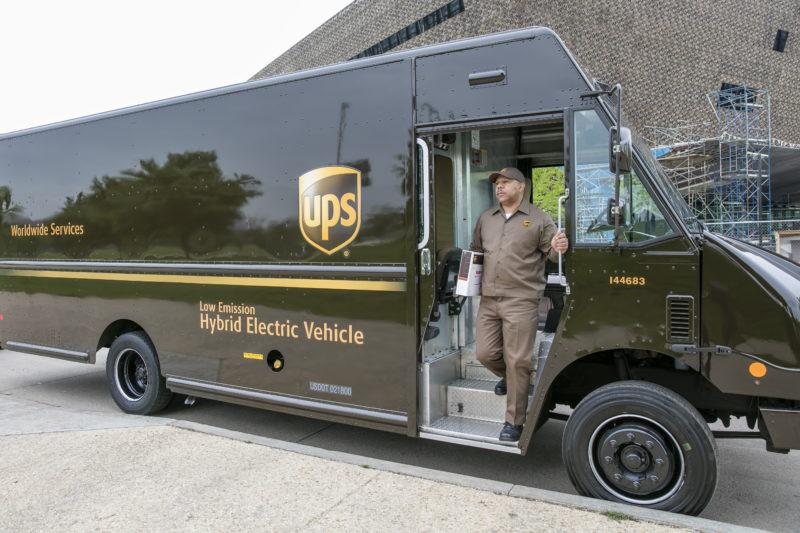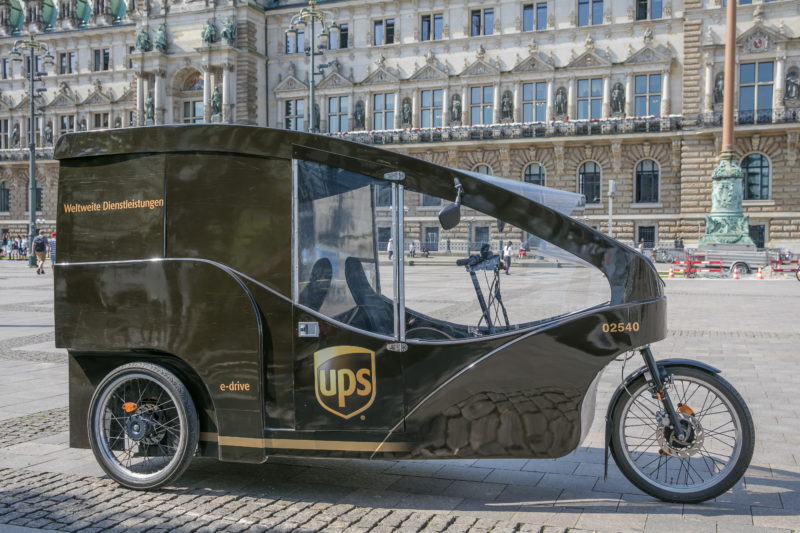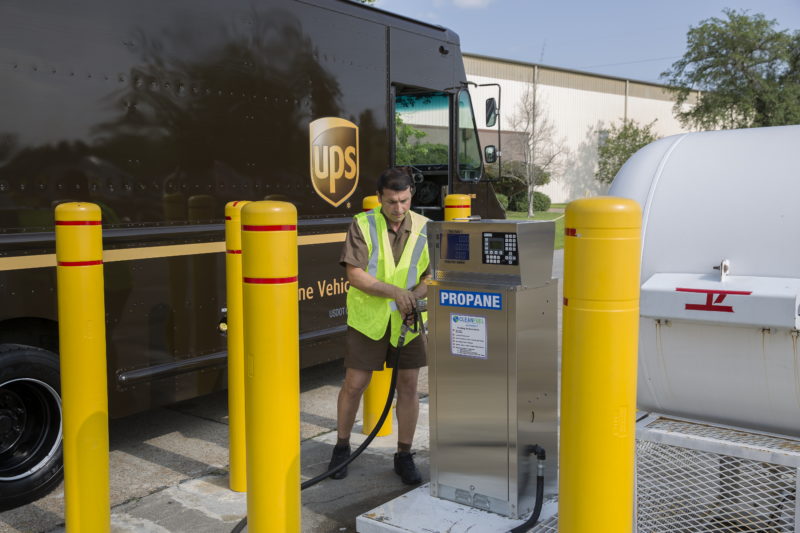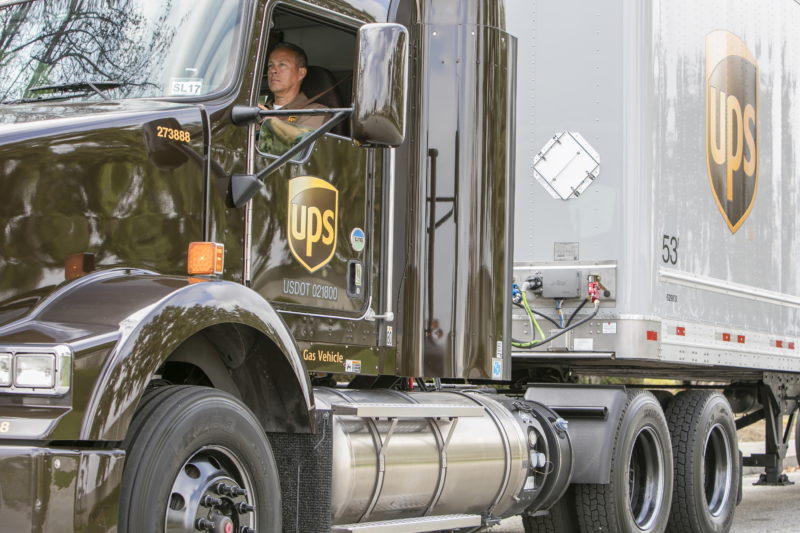United Parcel Service (UPS), an international package delivery firm, on Monday in Atlanta, Georgia announced that it has achieved its goal of driving one billion miles in its alternative fuel and advanced technology fleet one year earlier than planned, and marked more than 10 years of learning from its “Rolling Laboratory.”

According to the company, it’s commitment to sustainability is now transforming commercial transportation and logistics, spurring growth in the clean fuels market and powering critical engineering advances. The company’s wider sustainability progress is detailed in the 14th annual Sustainability Report, released on Monday.
“We had a big sustainability goal as we set out to make the most of our rolling laboratory by driving one billion clean miles in alternative fuel vehicles – that’s the equivalent of well over 4,000 trips to the moon,” said David Abney, Chairman and CEO, UPS. “While attaining this goal is new, our commitment to seeking out alternative fuels actually dates back to the 1930s when UPS tested electric vehicles. With more than 100,000 drivers logging more than 3 billion miles per year, our future depends on our ability to meet the growing demand for global trade while reducing our impact on the environment.”

UPS, believed to be the world’s largest package delivery company, reportedly deepened its commitment to alternative fuels in 2012, when it set the goal of reaching one billion miles driven with alternative fuels by the end of 2017. Shattering that goal one year early, about 12 percent of the conventional diesel and gasoline fuel previously used by UPS’s ground fleet is now being replaced by alternative fuels including renewable natural gas and renewable diesel.
“The question wasn’t should we make alternative fuels work?” said Mike Whitlatch, UPS’s vice president of global energy and procurement. “Instead, it was ’What’s the best way to make alternative fuels work for UPS, and for the environment?’ After more than a decade of focus, we are now driving more than 1 million miles globally each business day in our alternative fuel and advanced technology fleet.”

Recognising alternative fuels and advanced technologies each have unique advantages depending on the routes and geographies in which they are used, UPS, it was gathered, deploys the more than 7,200 vehicles in the Rolling Lab to determine what works best in each situation. From old-fashioned pedal power and electric-assisted bicycles in dense urban areas like London and Hamburg to electric and hybrid electric vehicles in the U.S., and natural gas, renewable natural gas and propane globally, UPS is putting sustainability innovation into action, all over the world.
“Many congested cities around the world are implementing zero tailpipe emissions zones, and UPS is keeping ahead of the curve by investing in advanced technologies and creating the commercial delivery fleet of the future,” said Abney.
By the end of 2016, UPS, founded in 1907, will have invested more than $750 million in alternative fuel and advanced technology vehicles and fueling stations globally since 2009. That continued investment, combined with supportive government policies, and a collaborative set of partners has helped to expand development and utilisation of alternative fuels, vehicles and infrastructure throughout the world.

UPS disclosed in a statement that, along the way, it learned several lessons that can help other companies make sustainability investments that create long-term payoffs. It listed these to include:
- Encourage innovation. What started out as an “approach” has become an ecosystem of innovation and progress shaped by collaboration with suppliers, policy makers and other stakeholders. UPS applied its expertise in logistics to the sustainability challenge and leveraged the scale of its 100,000 vehicle fleet to drive technology, market, and infrastructure improvements that make cleaner fuels and technologies economically viable.
- Adapt and tailor the solution. The best solution is not always the perfect solution. The fuels and vehicles that work in one region or one setting may not make sense in another. Technology constraints, range, infrastructure availability, government policies and local air quality goals all play a role in determining vehicle deployment and fuel selection.
- There’s no substitute for real-world big data. UPS is able to see 30,000 delivery route optimisations per minute through its On-Road Integrated Optimisation and Navigation (ORION) system, which uses fleet telematics and algorithms to reduce the number of miles driven. The application of this big data approach to the UPS Rolling Lab’s fleet has been a key enabler to improving performance and reducing costs. When fully implemented, ORION is expected to help UPS avoid 100 million miles driven every year, reduce greenhouse gas emissions by 100,000 metric tonnes annually, and avoid 10 million gallons of fuel per year.
- It takes consistent, unwavering commitment from leadership. Long-term investments don’t always pay off in the short term. Economic and market forces are constantly changing, and the political environment that is necessary to foster investment and infrastructure development can be unpredictable. It took UPS more than a decade to reach a point where the accumulation of miles driven by its fleet was rising nearly exponentially. That wouldn’t have happened without a long-term commitment.
Partner, promote and report progress. Sharing progress and learnings with key stakeholders and partnering with alternative fuel and technology developers, non-profits, government agencies and industry trade groups have been critical to the Rolling Laboratory’s success. UPS reports its progress annually in its Sustainability Report, and includes key metrics such as CO2 emissions, energy consumption, and alternative fuel and advanced technology miles driven, among others. Together, these metrics demonstrate the positive impact of the company’s sustainability and social responsibility programmes.
